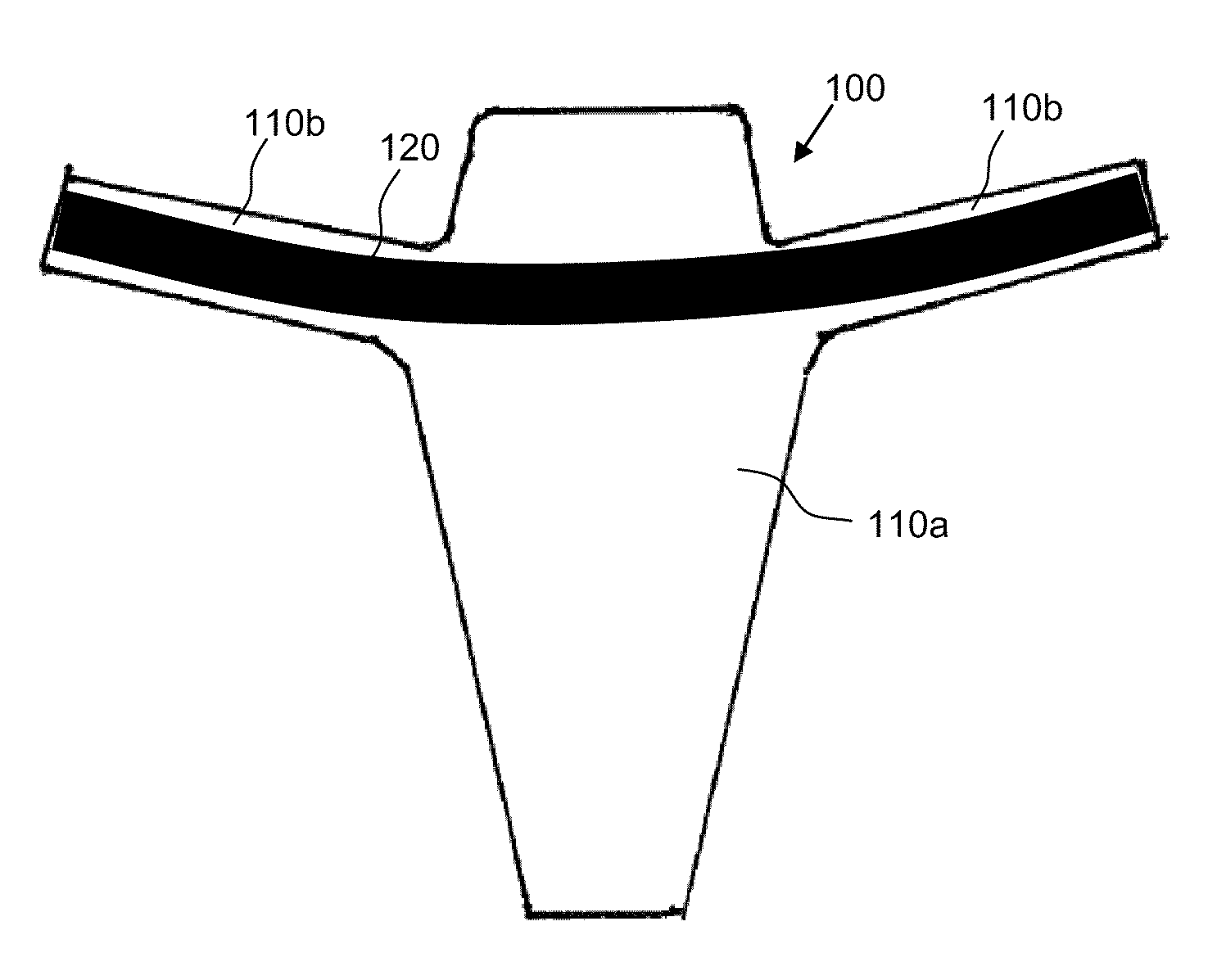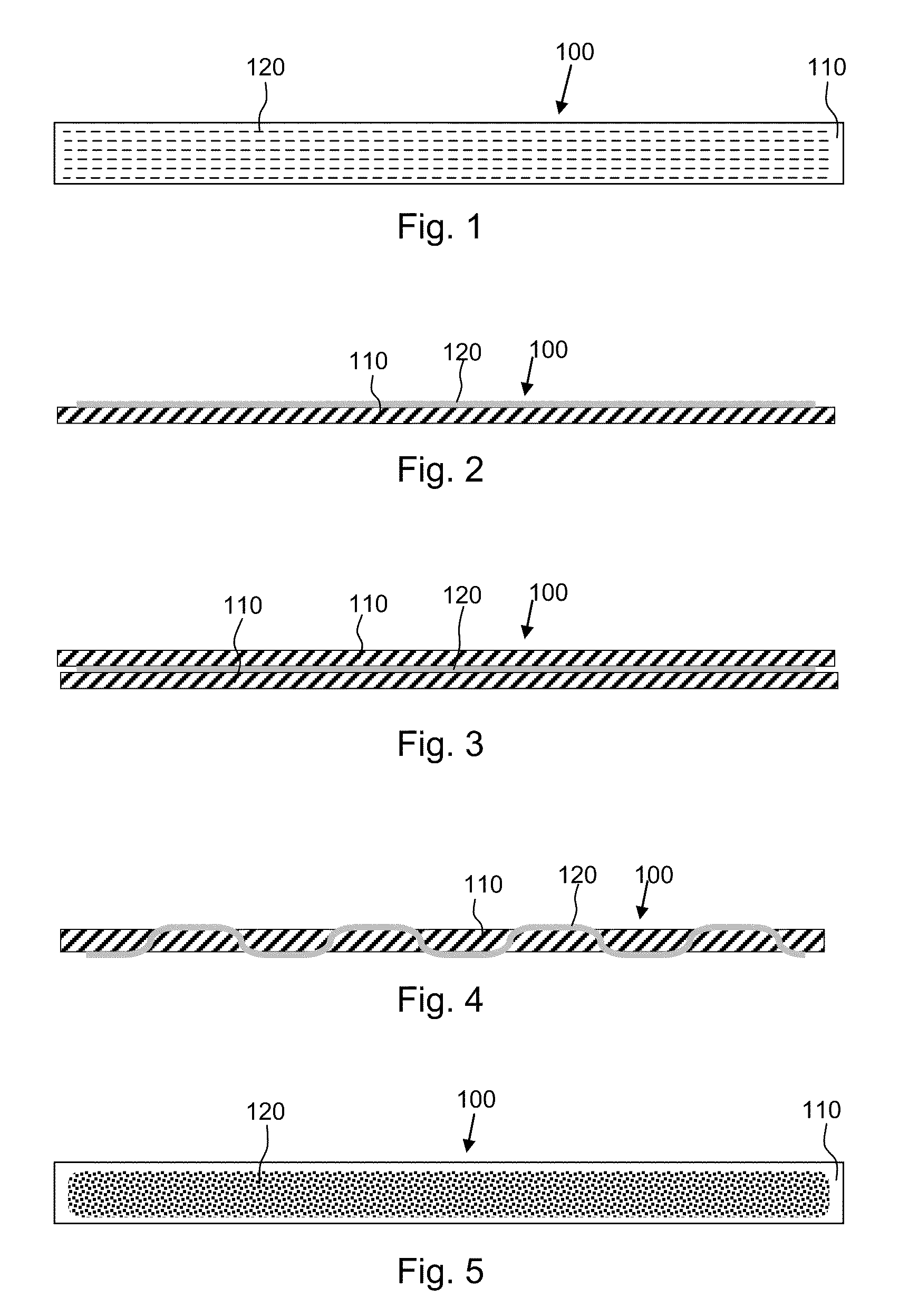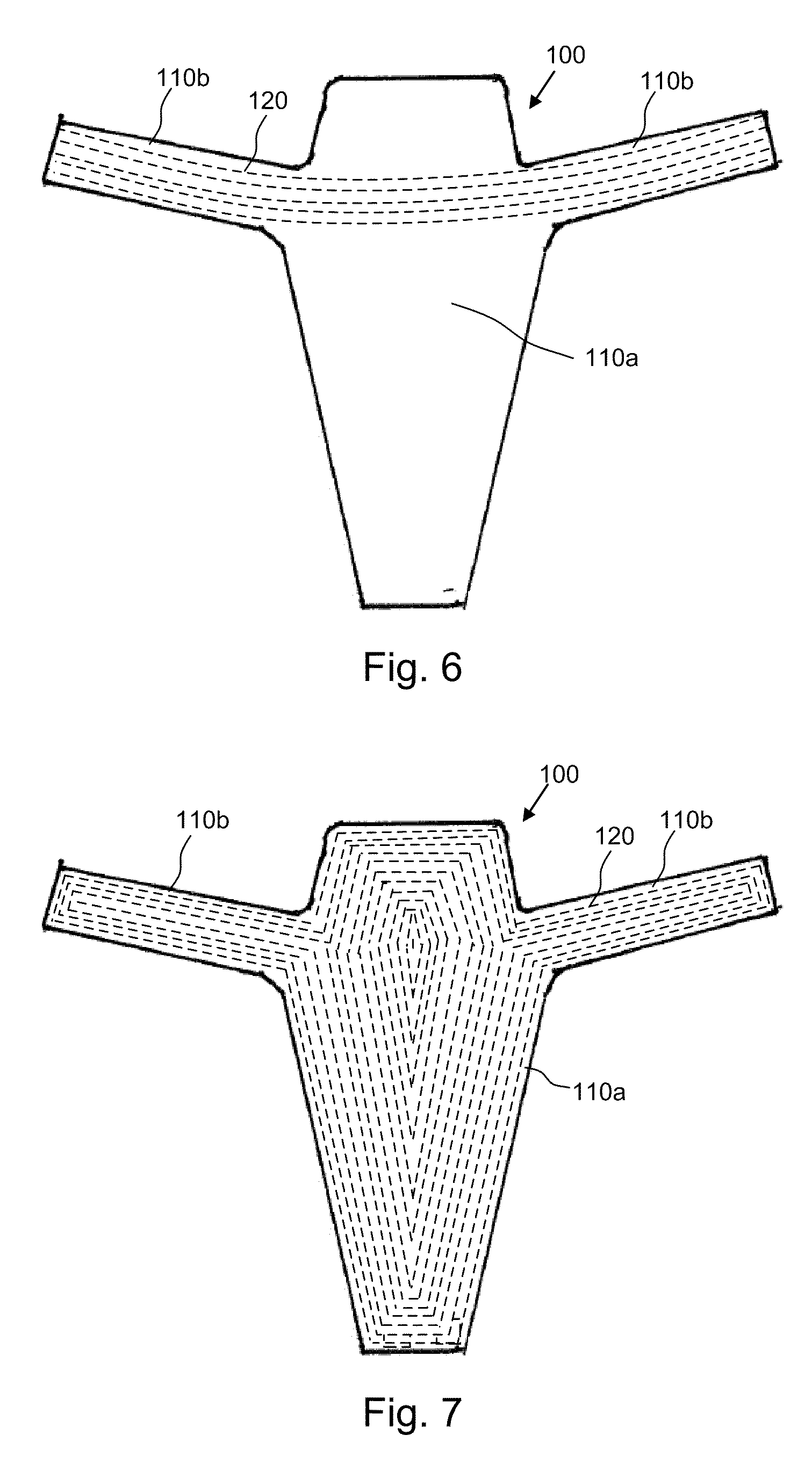Composite surgical implants for soft tissue repair
a surgical implant and soft tissue technology, applied in the field of surgical implants for soft tissue repair, can solve the problems of shrinkage of mesh fabric size, insufficient strength of mesh, and poor long-term effect of absorbable mesh, so as to avoid post-surgical complications
- Summary
- Abstract
- Description
- Claims
- Application Information
AI Technical Summary
Benefits of technology
Problems solved by technology
Method used
Image
Examples
Embodiment Construction
[0018]According to one aspect, the present invention provides composite implants for soft tissue repair that comprise (a) a substantially two-dimensional piece of biologic matrix material and (b) one or more non-absorbable synthetic polymeric filaments. The filaments may be disposed within the composite implant in various configurations, as discussed in more detail below.
[0019]The biologic matrix material is present in the implant to provide initial strength at the site soft tissue repair, for example, during the first several weeks of implantation. The one or more non-absorbable synthetic polymeric filaments (also referred to herein as “filaments”, “polymeric filaments” and “synthetic filaments”) are present in the implant to stimulate a mild, but ongoing, foreign body response, the purpose of which is to maintain the presence of fibrous collagenous tissue at the soft tissue repair site, thereby providing ongoing strength at the repair site after the biologic matrix material is abs...
PUM
 Login to View More
Login to View More Abstract
Description
Claims
Application Information
 Login to View More
Login to View More - R&D
- Intellectual Property
- Life Sciences
- Materials
- Tech Scout
- Unparalleled Data Quality
- Higher Quality Content
- 60% Fewer Hallucinations
Browse by: Latest US Patents, China's latest patents, Technical Efficacy Thesaurus, Application Domain, Technology Topic, Popular Technical Reports.
© 2025 PatSnap. All rights reserved.Legal|Privacy policy|Modern Slavery Act Transparency Statement|Sitemap|About US| Contact US: help@patsnap.com



